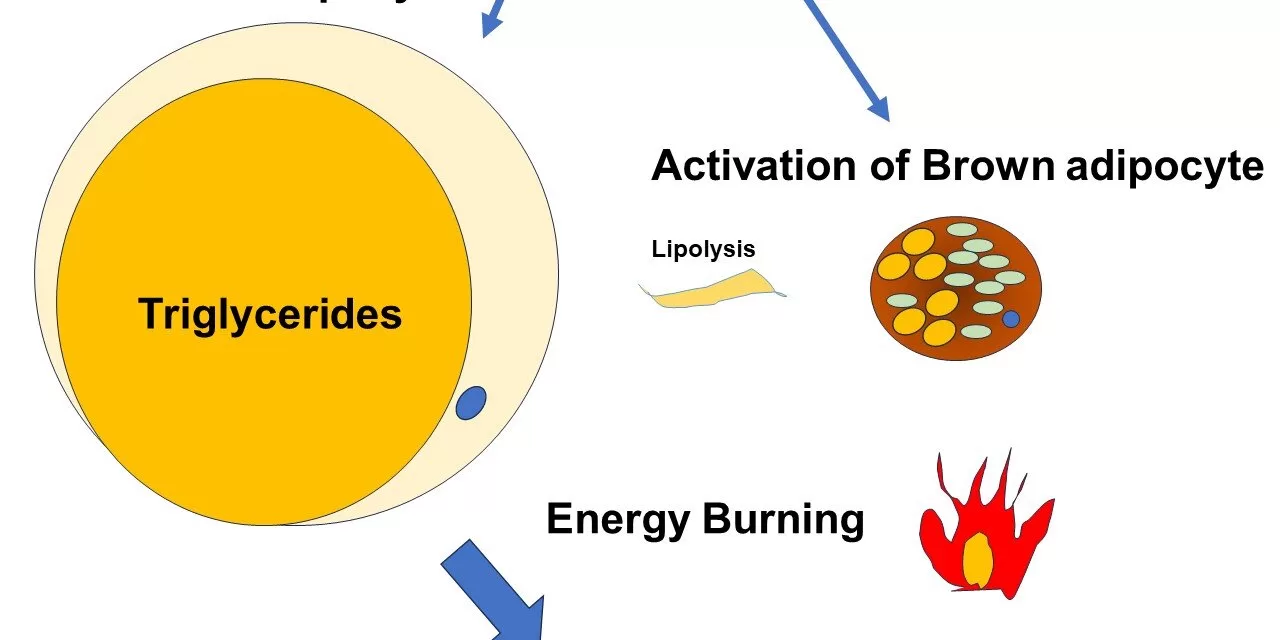Researchers from Kumamoto University have unveiled a groundbreaking discovery in the battle against obesity and diabetes. Their study, published in Nature Communications, identifies serine protease inhibitor A1 (SerpinA1), a liver-derived protein, as a crucial regulator in combating these widespread metabolic disorders. This hepatokine shows promise as a novel therapeutic target for enhancing glucose metabolism and activating brown adipose tissue (BAT), offering new hope for millions affected by these conditions.
BAT vs. WAT: The Key to Energy Regulation
Adipose tissues in the human body play distinct roles in energy balance. While white adipose tissue (WAT) stores excess energy as fat, brown adipose tissue (BAT) actively burns energy to produce heat, a process known as thermogenesis. However, BAT activity declines with age, increasing the risk of obesity and related metabolic disorders. The researchers have discovered that SerpinA1 not only promotes the browning of WAT but also activates BAT, reversing the age-related decline in thermogenic activity.
Breakthrough Findings
Led by Assistant Professor Masaji Sakaguchi, the Kumamoto University team demonstrated that SerpinA1 significantly enhances the expression of uncoupling protein 1 (UCP1), a critical component of thermogenesis. Using transgenic mice models, they observed:
- Increased Energy Expenditure: Mice overexpressing SerpinA1 burned more calories and showed heightened metabolic activity.
- Improved Glucose Tolerance: These mice exhibited better regulation of blood sugar levels.
- Resistance to Obesity: Even when fed a high-fat diet, SerpinA1-expressing mice remained lean.
Conversely, mice lacking SerpinA1 experienced reduced mitochondrial activity, leading to obesity and insulin resistance. These findings underscore the protein’s pivotal role in maintaining metabolic health.
A Novel Signaling Mechanism
The study also uncovered a unique interaction between SerpinA1 and the cell surface molecule EphB2. This interaction activates pathways that enhance UCP1 expression and mitochondrial activity in adipocytes. Unlike traditional approaches that rely on β-adrenergic pathways, this mechanism offers a distinct and potentially more effective way to stimulate thermogenesis.
Implications for Treatment
“Our findings suggest that boosting SerpinA1 levels could offer a new approach to managing metabolic diseases,” said Assistant Professor Sakaguchi. The ability of SerpinA1 to activate BAT and induce the browning of WAT provides a promising therapeutic pathway for treating obesity, type 2 diabetes, and related conditions.
The researchers are now focused on translating their discovery into clinical applications. By developing treatments that harness the power of SerpinA1, they aim to create innovative solutions for metabolic syndrome and other disorders driven by energy imbalance.
Future Directions
This discovery marks a significant step forward in understanding the molecular mechanisms underlying energy metabolism. With further research, SerpinA1 could become a cornerstone of future therapies aimed at restoring the body’s natural ability to burn fat and regulate glucose levels.
For more information, refer to the original study: Shota Okagawa et al, Hepatic SerpinA1 improves energy and glucose metabolism through regulation of preadipocyte proliferation and UCP1 expression, Nature Communications (2024). DOI: 10.1038/s41467-024-53835-9.











